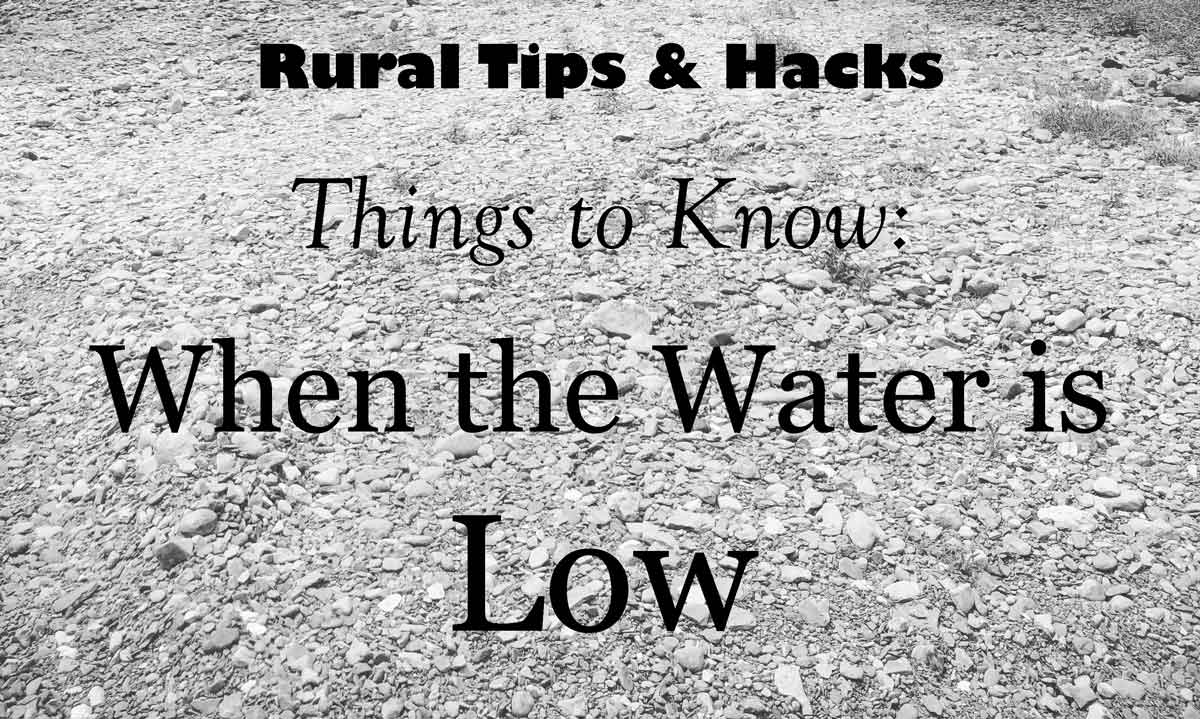Here are 5 things to remember when the creeks are drying up and the water is low or almost gone:
- Don’t swim
- Don’t fish
- Check water holes/ponds for livestock daily
- Look for fossils and artifacts
- Watch out for snakes
Tips alone aren’t very useful when it’s only a bullet-point list, I know. It helps to have one for SEO, though. So I’ll expand on them below and offer more information.
In our rural life here in Madison county, the water is a critical resource. We (and all of the local flora and fauna) depend on our springs and the water in our small creek. But every year in summer there is a long dry spell. Sometimes it begins earlier and lasts longer and becomes a drought.
When the Water is Low in the Creek
Don’t Swim
When there are only pools of water, all of the fish and other critters go there to eat, drink, and live. The water gets pretty nasty sometimes, especially if cows have access to it.
Swimming during periods of drought in the pools might feel good because it’s usually very hot outside. But it invites trouble when the water is low because of the concentration of bacteria. It will get in cuts or scrapes, eyes and ears and can lead to a serious infection.
Don’t Fish
Fish congregate in the small pools and it makes for an easy catch. But the fish have more parasites when they live in that environment, so we don’t eat them from the low water pools. Just throw them back. If it’s a true survival situation and you must eat the fish, be sure to cook them to above 145*F.
Check Water Holes
Our small creek runs through the center of the horse’s field. This is their source of water when they’re on that part of the land. It’s also the water source for all of the wildlife that live here. Bears come down the mountain to get water, along with bobcats, racoons, foxes, coyotes, and countless other animals.
Once the water is low, it’s a daily task to make sure they do have water somewhere along the creek. Sometimes we need to dig out one of the holes if it’s gotten too dry.
Usually there is at least a few holes that don’t dry up. It’s not actually ‘dry’, but it is about 2′ under the creek bed. The water continues to flow through the rocks and gravel to collect in the deeper pools and holes. Eventually it makes its way to the larger Felkins creek and then onward to Kings river.
Several springs feed our creek on our land and our neighbors to the east. None of those springs are high production, but the constant flow is what counts.
Look for Fossils and Artifacts (or pigments)
It’s a great time to walk the creek beds to look for arrowheads and fossils. I also look for rocks to make my paint pigments.

Watch out for Snakes
All of the creatures gravitate toward the cooler shade where water lives. Including snakes. Rattlesnakes coil up in little depressions and they’re very hard to see. So watch your step. I’ve nearly stepped on one before while walking the dry creek bed looking for water that hadn’t dried up.



Leave a Reply